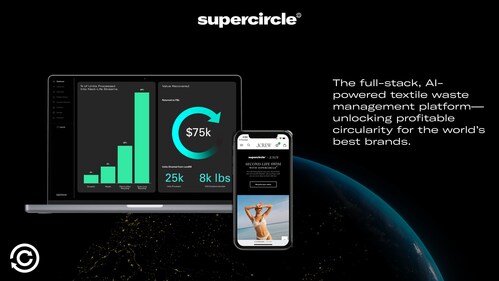From reimagined performance spaces and circus tents to portable solar panels and giant inflatables for outdoor concerts, these fabric structure case studies go beyond the sideshows to take center stage.
Coldplay’s world tour, Pvilion
At Pvilion, based in Brooklyn, N.Y., the company integrates solar cells with outdoor fabric and builds shelters that generate electricity. “Today, our particular focus is the sort of temporary expeditionary tent system—our system for defense, humanitarian-aid events, music, movies, etc.,” says Pvilion CEO and co-founder Colin Touhey.
This approach is why Pvilion was hired to create portable solar fabric panels and battery kits for Coldplay’s Music of the Spheres world tour, which runs through September.

Usually, the fabric used as covers behind stages is a cheap black outdoor fabric, Touhey says, “and you roll it across so that you can’t see anything behind these big stadium shows—the stages, the lasers, everything.” That was the perfect location for Pvilion to integrate solar power into fabric to help power the show.
“When you look at the surface area of the back of a stadium and you’re prepping for a concert for two, three, four, five days, that’s a lot of power,” Touhey says. “And that can all be going into batteries, which then are being charged during that period and are going to be used during the concert, eliminating the need for diesel fuel.”
The entire construction consists of 10,000 square feet comprising 70 black PVC panels integrated with solar cells. The solar fabric canvases fold up accordion-style and are stored in travel-friendly bags to create a lightweight, mobile kit. The panels take only half a day to set up on-site, allowing them to be fully operational for the evening concert. The system doesn’t give power to all the lighting on the main stage but does provide power for some LED lighting, backstage lighting, instruments, and video and lighting components.
“I think the logistics of moving an event every three days around the world in 100 shipping containers is staggering,” Touhey says. “So one of our challenges was to make sure that our pieces of equipment and our technology could handle the repeated beating and manhandling and abuse that equipment on the road will take.”
Touhey says, “Not only are the batteries better for the surrounding air quality, community health and the overall environment, but they are also silent. Diesel generators are incredibly loud and disruptive, and reducing the need for them greatly reduces the noise pollution they create.”
Let Them Eat Cake festival, Giant Inflatables

Mikael Abramowitch, general manager at Giant Inflatables in Melbourne, Australia, recently completed a large stage decoration for an outdoor New Year’s Day 2025 music festival (when it’s summer in the Southern Hemisphere), called Let Them Eat Cake, at Werribee Park, Victoria.
“We made a reflective chrome inflatable for their main stage called the Bastille Stage,” Abramowitch says. The 50-foot inflatable was suspended horizontally from the stage’s roof and weighed around 660 pounds, “which was a challenge in itself,” he notes. That included making sure the inflatable was safely attached to the stage and that there were management plans if the wind came up during performances.
To secure the horizontal fabric sculpture, “We worked with the engineers and the scaffolders who were building the stage,” Abramowitch says. “Trying to install something so heavy and so large onto a stage was also quite difficult.”
The inflatable’s material is called Mirror-Flex, Abramowitch says, “because it’s got that chrome finish like a mirror, but it’s soft enough that you can use it for an inflatable and you can make it essentially any shape that you want.” He says that it’s a step up from prior reflective inflatables where the surfaces were “not as smooth and glossy as the Mirror-Flex option.”
Abramowitch says the company’s Mirror-Flex material “allows us to offer a more premium reflective finish without sacrificing the overall shape due to the limitations of previously available reflective materials.”

He shares that in the past, Giant Inflatables created 32-foot reflective silver astronauts “using our more lightweight materials, which is essentially an Oxford cloth that’s had a reflective coating put on it, but even that coating is fairly matte. If you looked into it, you wouldn’t really see reflection, just a generalization of colors.”
Despite the challenges, Abramowitch says Giant Inflatables is always prepared to try new things. “Our slogan is ‘You dream it, we’ll inflate it,’” he says, “so a lot of people come to us with crazy ideas, and the crazier they are, the better we like it.”

In Jalisco, Mexico, Dunn Lightweight Architecture general manager Andrés Villaseñor created the Foro Cometa (Kite Forum) project in Zapopan as part of a new park. The amphitheater won an Outstanding Achievement award in the Advanced Textiles Association International Achievement Awards in 2024. (For the other top winners in its category, see pages 16–17.) At 1,746 square meters (18,794 square feet), “It’s one of our smaller projects, but it’s significant because it’s iconic,” he says.
“We thought that from the top, it looked like a beetle,” says Villaseñor, “but if you see it from underneath, you have three corners with high and low points, so you see some trapezoid shapes so it looks more like a kite.” The original concept was suggested by the project’s architect, Horacio López. “They had a contest for the name that the kids voted on, and they chose Foro Cometa.”
The entire development has different recreational areas, including a sports area and an outdoor cinema, but Dunn Lightweight Architecture created the stage area “for kids to show their talents,” says Villaseñor.

It’s where, he notes, they came up with developing “a nice roof that would cover the whole stage area” to withstand the elements but at the same time be open enough to be seen from all over, not just the main grandstands, which can seat around 400 people.
To create the structure, the company used around 1,700 square meters (18,000 square feet) of Saint Clair LAC 950 SLF, a type-2 PVC-coated polyester fabric. Producing the structure in the company’s shop took approximately four months. “We can do all the engineering, steel production and patterning here,” Villaseñor says, “so we can monitor the entire process.”
Villaseñor also is an engineer and is proud that they used so little steel. “The density of the steel is very low so, I don’t want to say it’s affordable, but it’s an optimized shape that reduces the cost to produce a project like this where you have a minimal surface and a well-designed concept that is steel-efficient and very light.” The project has two arches that support the primary structure, and the rest of the design is supported with four corner mats.
“The material properties allow the area to be used year-round,” says Villaseñor. “Anybody can come into the forum and start playing their instruments. They don’t need to turn on the lights or open doors in the day. And at night, when they do use the lighting, it glows because of the translucency of the fabric.”
Circus Sarasota, Carpas Y Lonas El Carrusel

Barnum and Bailey would marvel at Mexican-based architect Hector Mendoza Uribe’s forward-thinking 2023 redesign of the tent for Florida’s Circus Sarasota.
Seeking a new design, structure and complete equipment overhaul, Mendoza Uribe worked with Carpas Y Lonas El Carrusel to create an eye-catching big top, completely redesigning and manufacturing the main tent, an entrance tent and two massive connecting tunnels as part of an effort to solve a water infiltration issue.

“They had a problem in their former tent between the lobby and the main tent,” Mendoza Uribe explains. “There was a huge water infiltration problem with the main tent’s connection to the tunnels, so we had to design a new system.”
“When the Circus Arts Conservatory thought about designing a new tent, we needed improved function and weather resistance, and we wanted an aesthetic to reflect our artistry,” says Jennifer Mitchell, president and CEO of the organization. “We perform in a town with a rich circus legacy, so our tent had to be extraordinary—and it is.”

The new main tent stands at 46 meters in diameter (151 feet) and the entrance tent is approximately 40 meters (131 feet), with a 12-meter (39-foot) tunnel. The same material—Flexlight Perform 702 Serge Ferrari fabric—was used for both tents and the tunnel.
“In the circus-tent market, there are five or six trademarks,” Mendoza Uribe says, “but we’ve been using the Ferrari fabric for approximately 20 years because it’s considered among the top materials.”

He also worked to create a modern, 21st-century look while retaining the circus’s original red and white colors. “But we wanted to introduce some applications in blue,” he adds. The final product highlights bright red and blue swirls that stand out on the pristine multi-domed structure.
“The circus had a very traditional model, and we had to meet the challenge of offering something very modern and updated while still solving the water [leaking] issues,” he adds. “We also had to ensure security in the fabrication and designing of the exterior arc by suspending everything through steel cables.”

That allowed Mendoza Uribe to remove poles from the structure, which opened up the sightlines for audiences, much like a theater or auditorium. “That’s important,” he says, “because currently, the circus has to compete with cinemas and theaters, so it was essential to find solutions to attract more people to the circus.”
Kelly Hartog is a freelance journalist in Los Angeles, Calif.

Large-scale outdoor fabrics can create a corresponding amount of waste. However, there is a trend among designers and manufacturers toward more sustainable practices.
In Mexico, Dunn Lightweight Architecture general manager Andrés Villaseñor shares that his company has been working more with solar-panel developers. “I think as this develops, it’s going to change the whole industry,” he says, “because if we have 20-, 40- or 60,000 square meters of roof and can have some energy gains as a result, that will see the whole industry evolve.”
At Giant Inflatables in Melbourne, Australia, general manager Mikael Abramowitch says his company is working to pioneer interchangeable skin inflatables. “I believe you have to be the change you want to see,” he says.
Abramowitch designed a 26-foot soccer ball in 2023 to promote the FIFA Women’s World Cup for a company in Adelaide but then created a new skin for it to look like a golf ball. “That could then be used to promote their golf event,” he says. That, he notes, saves a lot of inflatables from going into a landfill, “and saves the client a lot of money, plus it’s a much more responsible way of using inflatables.”








Leave A Comment